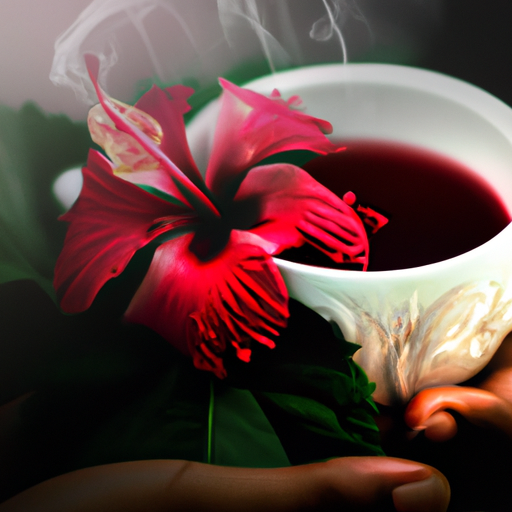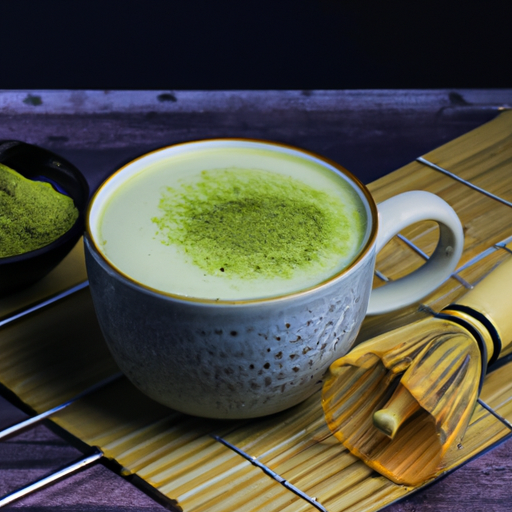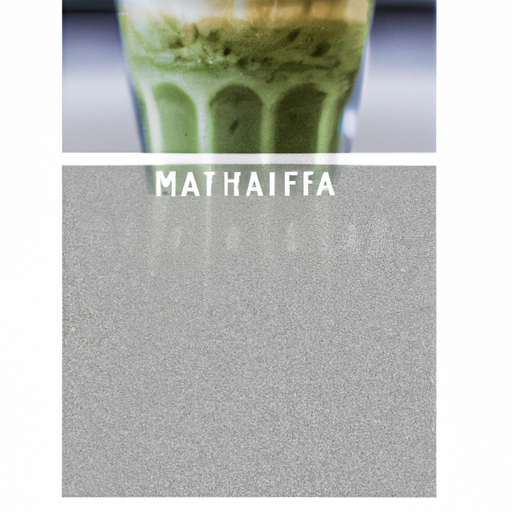As someone who adores matcha, I’m constantly searching for chances to honor this bright green tea. This is why I was excited to learn about National Matcha Day! However, the question arises: when does this celebration take place? It appears the answer is a bit complicated.
National Matcha Day is not an official holiday recognized by the government, so there is no set date for it. Instead, it is a day that has been created by matcha enthusiasts to celebrate this unique and delicious tea. Different organizations and individuals celebrate National Matcha Day on different days throughout the year, so it’s important to keep an eye out for announcements from your favorite matcha brands and shops.
In this article, we will explore the history of matcha, its health benefits, and different ways to enjoy it. We will also provide tips on where to find the best matcha and how to prepare it, as well as suggestions for celebrating National Matcha Day whenever it may be.
Key Takeaways
- National Matcha Day is not an official holiday recognized by the government.
- Different organizations and individuals celebrate National Matcha Day on different days throughout the year.
- National Matcha Day is a day to celebrate the unique and versatile flavor of matcha.
- Ways to celebrate National Matcha Day include trying new matcha recipes and giving matcha-themed gifts.
The History and Origins of Matcha
Did you know that matcha has been an important part of Japanese culture for over a thousand years? It’s true! Matcha cultivation has a rich history, dating back to the Tang Dynasty in China.
Japanese monks brought the tea to Japan in the 12th century, where it quickly became an integral part of Japanese tea culture. The cultivation of matcha is a unique process that involves shading the tea plants for several weeks before harvest.
This process increases the chlorophyll content in the leaves and gives matcha its vibrant green color. After the leaves are harvested, they are steamed, dried, and ground into a fine powder. This powder is then used to make the famous matcha tea.
Matcha has played an important role in Japanese tea ceremonies for centuries. These ceremonies are steeped in tradition and focus on the preparation and presentation of matcha tea. Today, matcha is enjoyed all over the world, not just for its taste, but also for its health benefits.
Speaking of which, let’s delve into the health benefits of matcha…
The Health Benefits of Matcha
Sipping on a steaming cup of matcha tea can transport you to a world of unparalleled health and wellness benefits. Matcha is rich in antioxidants, vitamins, and minerals that can help to boost metabolism, enhance cognitive function, and promote overall well-being. Here are some of the health benefits of matcha that you need to know:
First, matcha is an excellent source of antioxidants, which can help to reduce inflammation and prevent chronic diseases such as cancer and heart disease. In fact, matcha has up to 137 times more antioxidants than regular green tea! Second, matcha can help to boost your metabolism and burn fat, making it a great addition to any weight loss plan. Finally, matcha can help to enhance cognitive function and improve mood, thanks to its high levels of L-theanine, an amino acid that promotes relaxation and mental clarity.
If you’re looking to incorporate matcha into your diet, there are plenty of delicious recipes to try. Matcha lattes, smoothies, and desserts are all popular choices. And if you’re trying to lose weight, drinking matcha before a workout can help to boost your energy levels and burn more calories. With so many health benefits and tasty recipes to choose from, it’s no wonder that matcha has become one of the most popular superfoods of the moment.
Moving on to the next section, let’s take a look at how matcha is made.
How Matcha is Made
Are you curious about the fascinating process behind how matcha is made? Let’s dive into the intricate details of how this vibrant green powder is created from freshly harvested tea leaves.
Matcha cultivation begins with shading the tea plants for about three weeks before harvesting. This process allows the tea leaves to produce more chlorophyll, giving the tea its brilliant green color and enhancing the flavor and nutritional value.
Once the leaves have been harvested, they are steamed to prevent fermentation and preserve the flavor and nutrients. After steaming, the leaves are stripped of their veins and stems, leaving only the soft and delicate tea leaves. These leaves are then ground into a fine powder, using traditional stone mills. This technique ensures that the powder retains its vivid green color, rich flavor, and nutritional properties.
The matcha powder is carefully packaged and shipped to tea lovers around the world. Drinking matcha not only offers a delicious way to enjoy tea, but it also provides numerous health benefits. From boosting metabolism to reducing stress, matcha contains powerful antioxidants and nutrients that make it one of the healthiest beverages available.
Now that we’ve explored the process of matcha cultivation and processing techniques, let’s move on to the different types of matcha and how they differ.
Different Types of Matcha
When it comes to matcha, there are two main types: ceremonial grade and culinary grade. As someone who’s been drinking matcha for years, I know the importance of understanding the differences between the two.
Ceremonial grade matcha is the highest quality, while culinary grade is more affordable and used in cooking.
Ceremonial Grade
Indulging in a cup of ceremonial grade matcha is like taking a stroll through a serene Japanese garden. Each sip transports you to a state of tranquil bliss. The quality of matcha used in traditional tea ceremonies is of utmost importance. The leaves are hand-picked, steamed, dried, and then stone-ground into a fine powder. The resulting product is a vibrant green powder with a smooth, velvety texture.
Brewing techniques for ceremonial grade matcha are also very specific. The powder is whisked with hot water using a bamboo whisk until it forms a frothy, creamy consistency. The resulting beverage has a slightly sweet, vegetal taste and a pleasant aroma.
While it is possible to use ceremonial grade matcha in culinary applications, it is best enjoyed in its purest form. Now, let’s explore the world of culinary grade matcha and its many uses.
Culinary Grade
Using culinary grade matcha in baked goods and smoothies can add a unique, earthy flavor to your favorite recipes. Unlike ceremonial grade matcha, which is pricier and meant to be consumed on its own, culinary grade matcha is more affordable and versatile.
It’s perfect for creating delicious matcha recipes that can be enjoyed any time of the day. When using culinary grade matcha in recipes, it’s important to pair it with ingredients that complement its flavor profile.
Matcha goes well with citrus fruits such as lemon, lime, and orange, as well as with dairy products like milk and yogurt. A popular matcha recipe is matcha latte, which combines matcha powder with hot milk and sweetener.
This drink is a great way to enjoy the health benefits of matcha while also satisfying your sweet tooth. In the next section, I’ll discuss some of the most popular matcha drinks that you can try.
Popular Matcha Drinks
You can taste the sweet and creamy goodness of a matcha latte with just one sip, making it the perfect pick-me-up on a busy day. Matcha drinks have become increasingly popular in recent years, and for good reason.
Here are a few of the most popular matcha drinks:
- Matcha lattes: This frothy, creamy drink combines steamed milk with matcha powder for a delicious and nutritious pick-me-up.
- Matcha smoothies: For a refreshing and energizing drink, try blending matcha powder with your favorite fruit and yogurt for a delicious smoothie that’s packed with antioxidants.
- Iced matcha latte: On a hot day, nothing beats an iced matcha latte. Simply mix matcha powder with cold milk and ice for a refreshing and delicious beverage.
But matcha isn’t just for drinking – it’s also a popular ingredient in desserts. In fact, matcha desserts have become so popular that they even have their own category in some bakeries and cafes.
So, if you’re looking for a sweet treat that’s also good for you, be sure to try out some matcha desserts.
Matcha Desserts
If you have a sweet tooth but still want to eat healthily, consider trying out the various matcha desserts available in bakeries and cafes. Matcha flavor is a perfect addition to any dessert, and it complements the sweetness of most desserts. Matcha desserts come in all forms, from cakes to cookies, and each one has a unique taste that is sure to satisfy your cravings.
One of the most popular matcha desserts is matcha ice cream. Matcha ice cream is a creamy treat that is perfect for a hot summer day. It has a lovely green color and a slightly bitter taste that is balanced by the sweetness of the ice cream. Matcha ice cream is available in most Japanese restaurants and cafes, but you can also make it at home using matcha powder, cream, and sugar.
Matcha desserts are a great way to enjoy the health benefits of matcha while satisfying your sweet cravings. You can find matcha desserts in most bakeries and cafes that serve Japanese or Asian cuisine. If you’re looking for the best matcha desserts, consider going to a Japanese bakery or cafe that specializes in matcha desserts.
In the next section, we’ll discuss where to find the best matcha cafes and bakeries, so stay tuned.
Where to Find the Best Matcha
Looking to indulge in the best matcha treats? Check out these top-rated cafes and bakeries for a taste of authentic and delicious matcha creations. Many of these establishments source their matcha from Japan, where it is grown on traditional matcha farms. These farms cultivate the finest quality matcha leaves, which are then processed into the vibrant green powder we all know and love.
One of my personal favorite matcha cafes is Cha Cha Matcha, which has several locations across New York City and Los Angeles. Not only do they serve up incredible matcha lattes and pastries, but their bright pink and green decor makes for a truly Instagram-worthy experience. Another great spot is Matchaful, a Brooklyn-based cafe that prides itself on using only the highest quality matcha from Japan. Their menu features a variety of matcha drinks, as well as matcha-infused snacks like muffins and cookies.
If you’re looking to enjoy matcha in the comfort of your own home, consider ordering from online matcha retailers or subscribing to a monthly matcha box service. This way, you can sample different varieties of matcha from various farms and regions. Some popular online matcha retailers include Ippodo Tea Co. and Breakaway Matcha. No matter where you choose to get your matcha fix, you’re sure to be impressed by the unique flavor and health benefits of this beloved green tea powder.
Ready to prepare your own matcha at home? Stay tuned for our next section on how to prepare matcha like a pro.
How to Prepare Matcha
Get ready to become a matcha master with these simple steps for preparing a perfect cup of this delicious green tea powder.
First and foremost, make sure you have the right tools and equipment. Matcha requires a special bamboo whisk, called a chasen, to properly mix the powder with hot water. You can also use a traditional tea set or a simple bowl and spoon.
Next, measure out the matcha powder and sift it into your bowl to remove any clumps. Use about 1 teaspoon of matcha for every 2 ounces of water.
Heat your water to just below boiling, then pour it into the bowl. Use the whisk to vigorously and quickly mix the matcha and water together in a zigzag motion until a frothy layer forms on top.
There are many variations and matcha recipes you can try, such as adding honey or milk for sweetness or experimenting with different types of teas to blend with the matcha. And don’t forget about matcha accessories, like a beautiful matcha bowl or a handy travel set for on-the-go sipping.
Now that you know how to prepare matcha, let’s dive into celebrating national matcha day!
Celebrating National Matcha Day
Let’s explore ways to commemorate the beloved Japanese green tea powder and all its delicious variations! National Matcha Day is a day to celebrate the unique and versatile flavor of matcha.
There are a number of ways to celebrate this day, such as trying new matcha recipes or giving matcha-themed gifts to your loved ones. To truly honor National Matcha Day, try experimenting with new matcha recipes. Matcha can be used in a variety of dishes, from smoothies and lattes to cakes and cookies. You can even mix matcha powder with popcorn for a unique and healthy snack. The possibilities are endless, and this day is the perfect opportunity to try something new and exciting.
Another great way to celebrate National Matcha Day is by giving matcha gifts to your friends and family. There are a number of matcha-themed gift ideas, including matcha tea sets, matcha-infused skincare products, and matcha-flavored snacks. These gifts not only celebrate the delicious taste of matcha, but also introduce others to the many health benefits that come with consuming matcha regularly.
So, why not share your love for matcha with those around you on this special day?
Frequently Asked Questions
What are some traditional ceremonies or rituals associated with drinking matcha?
Tea ceremonies have been a part of Japanese culture for centuries, and matcha has been a staple in these ceremonies for just as long. The preparation of matcha involves a precise ritual, where the tea is whisked until frothy and served in a special bowl.
The ceremony is steeped in tradition and is meant to create a sense of mindfulness and tranquility. Along with its ceremonial use, matcha also has numerous health benefits, such as being high in antioxidants and promoting relaxation and mental clarity.
Incorporating matcha into your daily routine can be a great way to improve your overall health and wellness.
What is the significance of the color and texture of matcha powder?
The color and texture of matcha powder are significant factors that influence its flavor combinations. Matcha powder is typically a vibrant green color, which indicates the high chlorophyll content of the leaves used to make it. This gives the powder a slightly grassy, earthy flavor, which can be balanced with other ingredients in a variety of ways.
The texture of the powder is also important, as it should be fine and smooth to ensure that it blends well with other ingredients. When combined with milk or other liquids, matcha powder creates a creamy and frothy texture that is both satisfying and refreshing.
Overall, the color and texture of matcha powder contribute to its unique taste and versatility in culinary applications.
Are there any cultural traditions or superstitions associated with drinking matcha?
As a matcha enthusiast, I’m always intrigued by the cultural traditions and superstitions associated with this green tea powder.
One interesting example is the Japanese tea ceremony, also known as Chanoyu, which has been a significant part of Japanese culture for centuries. The ceremony often involves the preparation and serving of matcha tea, and is steeped in symbolism and meaning.
Matcha is also known for its numerous health benefits, including being high in antioxidants and providing a calm energy boost.
In terms of history and culture, matcha has been a staple in Japanese tea ceremonies since the 12th century, and has since gained popularity all over the world.
Its unique taste and texture, as well as its many health benefits, make it a beloved beverage for many.
How does the use of matcha differ in different regions or countries?
Matcha, a finely ground green tea powder, has become increasingly popular in recent years due to its health benefits and unique flavor.
While it is commonly associated with Japanese culture and cuisine, matcha is also used in a variety of ways in other regions and countries.
In China, matcha is often used in traditional ceremonies and is also incorporated into savory dishes such as dumplings and noodles.
In Korea, matcha is used as a flavoring for traditional sweets and desserts.
In the Western world, matcha has gained popularity as an ingredient in beauty products due to its antioxidant properties. It’s used in face masks, scrubs, and even lip balms.
Despite its various uses, matcha remains a beloved drink in many cultures and is enjoyed both hot and cold.
What are some unique flavor combinations or recipes that use matcha as an ingredient?
Well, isn’t it just delightful that we get to explore the fascinating world of matcha-infused desserts and smoothie bowls? The possibilities are truly endless when it comes to this vibrant green tea powder.
From classic matcha lattes to unconventional matcha ice cream sandwiches, there are plenty of unique flavor combinations and recipes to experiment with. One could try incorporating matcha into a creamy cheesecake or even a fluffy chiffon cake for a subtle yet distinct flavor profile.
For those seeking a healthier option, try blending matcha powder into a smoothie bowl with spinach, frozen banana, and almond milk. The possibilities are endless when it comes to incorporating matcha into our culinary creations.
Conclusion
In conclusion, as a matcha enthusiast, I highly recommend celebrating National Matcha Day. This special day honors the rich history and numerous benefits of this beloved tea.
From boosting energy and focus to containing powerful antioxidants, matcha truly has something to offer everyone. Whether you prefer a classic matcha latte or a decadent matcha dessert, there are endless ways to enjoy this versatile ingredient. And with its growing popularity, it’s easier than ever to find high-quality matcha products and specialty shops.
So why not take a moment to savor the delicious and healthful qualities of matcha? Join me in celebrating National Matcha Day and discover the many reasons why this vibrant green tea has captured the hearts of so many. After all, what’s better than indulging in a little bit of self-care with a warm cup of matcha in hand?










